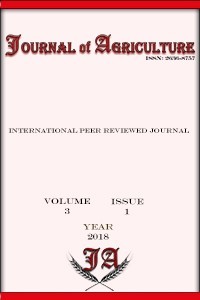RÜZGAR VE RÜZGAR OLAYLARI
Çok önceden bilinen, sürekli geliştirilen ve fosil yakıtlarla rekabet edebilen rüzgar enerjisi temiz ve emisyonsuz bir enerji çeşididir. Emisyonu olmadığı için doğrudan sera gazları oluşturmaz ve küresel ısınmaya doğrudan katkı yapmaz. Enerji maliyeti yoktur ve işletme masrafları düşüktür. Başka ülkelere bağımlılığı olmayan ve belli bölgelerde oldukça verimli olan bir eneji türüdür. Rüzgar enerjisinin bu olumlu özellikleri bu enerjiye olan ilgiyi giderek artırmaktadır. Özellikle elektrik enerjisi üretimi son dönemlerde ön plana çıkmıştır. Rüzgar enerjisinin diğer bir yönü onun aşındırıcı ve taşıyıcı ve çevreyi değiştirici etkisidir. Rüzgar erozyonu üzerine yapılan çalışmalar rüzgar enerjisinin bu olumsuz yönü ile ilgilidir. Rüzgar enerjisi engellenemeyeceği için, aşındırıcı ve taşıyıcı etkileri, toprak yüzeyinde yapılacak koruma önlemleri ile azaltılabilir veya durdurulabilir. Bu çalışmada rüzgar enerjisi, özellikleri ve rüzgar olayları içerisinde yer alan rüzgar erozyonu ve etkileri incelenmiştir.
Anahtar Kelimeler:
Rüzgar enerjisi, rüzgar erozyonu, rüzgar erozyonu etkileri
WIND AND AEOLIAN PROCESSES
Well-known from ancient times, continuously developed, and competitive with fossil fuels, wind energy is a clean and emission-free energy type. It does not create direct greenhouse gases because of lack of emission and does not directly contribute to global warming. There is no energy cost and low operating costs. It is a kind of energy which is not dependent on other countries and is very efficient in certain regions. These positive characteristics of wind energy are increasing the interest in this energy. Especially electrical energy production has come to the forefront in recent years. Another aspect of wind energy is its abrasive, and conveyor, and environment-changing effect. Studies on wind erosion are related to this negative aspect of wind energy. Since the wind energy cannot be prevented, the abrasive and conveyor effects can be reduced or stopped by the protective measures to be made on soil surface. In this study, wind energy, its features, and wind erosion in aeolian processes, and effects of wind erosion were investigated.
Keywords:
Wind energy, wind erosion, effects of wind erosion,
___
- Atalay, İ., 2004. Açıklamalı Türkçe-İngilizce Doğa Bilimleri Sözlüğü, Coğrafya-Ekoloji-Ekosistem. META Basım Matbaacılık Hizmetleri, 544 sayfa. Bornova, İzmir.
- AWEA, 2018. American Wind Energy Association. Erişim tarihi: 26.12.2018. https://www.awea.org
- Bharatdwaj, K., 2006. Physical Geography: Hydrosphere. Published by Discovery Publishing House, ISBN: 81-8356-167-5, p. 365.
- Burton, T., D. Sharpe, N. Jenkins, E. Bossanly, 2001. Wind energy handbook. John Wiley&Sons, Inc. P. 780.
- Dorn, R.I., T.M. Oberlander, 1982. "Rock Varnish." Progress In Physical Geography, 6, 317-367.
- FAA, 2008. Wind shear. Federal Aviation Administration, FAA-P-8740-40, AFS-8.
- FAO, 2018. Wind erosion control. Erişim tarihi: 25.12.2018.http://www.fao.org/docrep/T1765E/t1765e0t.htm
- Karaoğlu, M., 2013. Meteoroloji, Klimatoloji, Zirai Meteoroloji. Nobel Akademik Yayıncılık. Yayın No: 700. ISBN: 978-605-133-601-5. 1. Basım. 290 sayfa.
- Knight, J., 2008. The environmental significance of ventifacts: A critical review. Earth-Science Reviews, 86, 89-105.
- Laity, J., 2014. Pedestal Rock. In: Encyclopedia of Planetary Landforms. Springer, New York, NY.
- Lancaster, N., 1986. Dynamics of deflation hollows in the elands bay area, cape province, South Africa. Catena, 13(1-2), 139-153.
- Li, J., Z. Dong, G. Qian, Z. Zhang, W. Luo, J. Lub, M. Wang, 2016. Yardangs in the Qaidam Basin, northwestern China: Distribution and morphology. Aeolian Research, 20, 89-99.
- NGAG, 2005. National Geographic Almanac of Geography, page 166, ISBN 0-7922-3877-X.
- Perego, A., A. Zerboni, M. Cremaschi, 2011. Geomorphological map of the Messak Settafet and Mellet (Central Sahara, SW Libya). Journal of Maps, 7(1), 464-475.
- USDA, 2018. Wind Erosion: Problem, Processes, and Control. Written by John Tatarko. Erişim tarihi: 26.12.2018.https://www.nrcs.usda.gov/Internet/FSE_DOCUMENTS/nrcs142p2_019407.pdf
- WE, 2018. Wind Europe. Erişim tarihi: 26.12.2018.https://www.windeurope.org
- Lancaster, N., 2014. Aeolian Processes. Reference Module in Earth Systems and Environmental Sciences, Elsevier, 1-17, doi: 10.1016/B978-0-12-409548-9.09126-0. © 2014 Elsevier Inc. All rights reserved.
- Wieringa, J., 1998. How far can agrometeorological station observations be considered representative? Preprint to 23rd Amer. Meteor. Soc. Conference on Agric. and Forest Meteor. (Albuquerque).
- Zobeck, T.M., R.S. Van Pelt, 2014. Wind Erosion. USDA Agricultural Research Service. Lincoln, Nebraska. Publications from USDAARS/UNL Faculty. Paper 1409, 209-227.
- ISSN: 2636-8757
- Yayın Aralığı: Yılda 2 Sayı
- Başlangıç: 2018
- Yayıncı: Barış EREN
